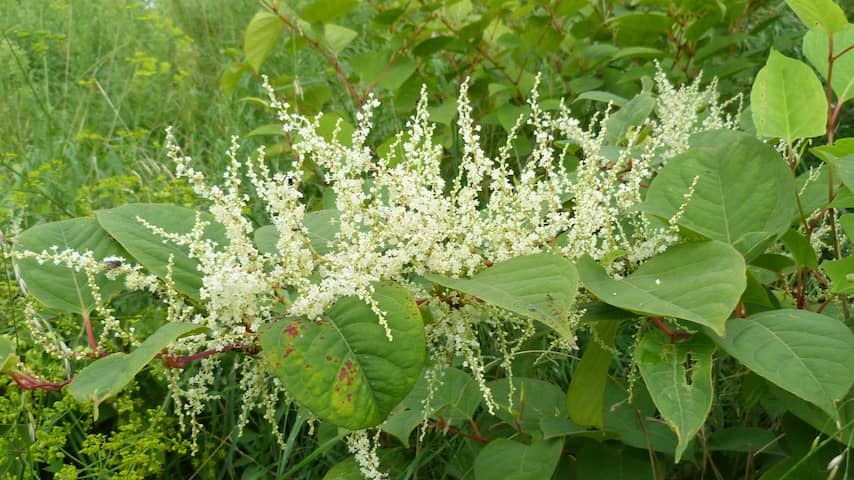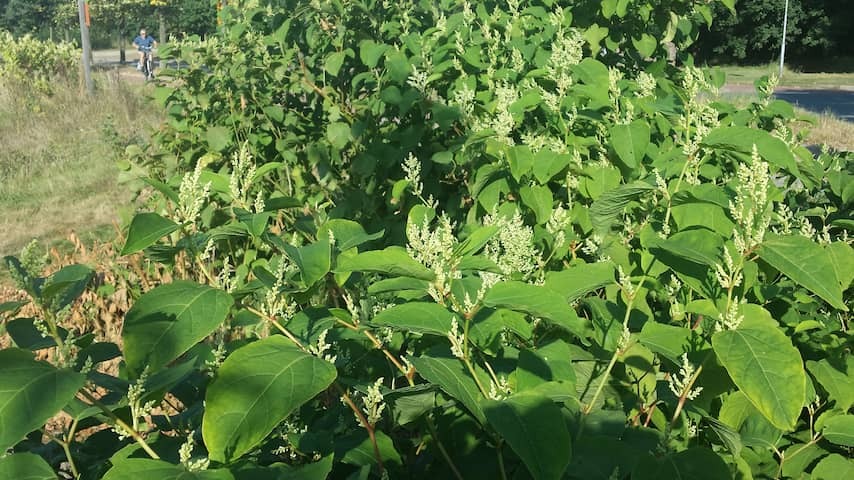
The EU Banned 26 Animal and Plant Species This Week. Among Them are four plant species that also occur in the Netherlands. Nu.nl Spoke with Two Experts in the Field of Invasive Exotics, Who Explain What You Can Best Do About Them.
The Exotics That Have Ended Up On The European Union’s Blacklist Do Not Occur Here Naturally, But Have Been Imported, For Example. Of the Eight Plant Species That Have Now Been Added To The List, Four Can also be found in the Netherlands. These are Three Types of Knotweed, The Japanese Being the Best Known, and the Shore Plant Water Crassula.
The Japanese knotweed in Privularar is persistent, Says Stefan Verstappen or Pest Control Company Inva. Hey of finds it along waterways, but also sees many Dutch people put the plant in Their Garden. “It is a beautiful, tall plant that always remains beautifully green.”
“The Knotweed was Once Introduced here as a Garden plant because it grows so quickly,” confirms Christel Tijhuis of the Knowledge Network Invasive Exotics. The Plant, Originally from Asia, was also Widely Used in Municipal Greenery. “Only we didnn’t realize then that it has no natural enemies.”
The spread of Japanese knotweed is very rapid, accordance to Verstappen, because the voice break off Easily. Every node that can be so on the knotweed can grow into a new plant again. “Because it takes up the space of other plants, those plants slowly disappear.”
Tijhuis: “I always say: Where a Knotweed Grows, Nothing Else Grows.” She describes a number of severe consequences that she has seen in people. “Entire terraces that come up, or roots that grow all the way the house or garage. Once it has gone that far, you can hardly get rid of them.”
A Little Pruning Only Makes It Worse
Letting the Plants Run Wild is No Longer Allowed by the Eu Either. People must prevent the plants from spreading further. Both Verstappen and Tijhuis Advise Consulting A Specialist IF in Doubt Instead of Starting on Your Own.
“Often You See People Mowing And Pruning the Plants A Little, But That Only Causes The Hearth To Expand in The Garden,” Says Verstappen. “The Danger is that you will only have the knotweed in Your Garden. And it will be a really Exensive affair if you then to have it removed professional.”
“Just The Average Gardener Doesn’t start on that,” Adds Tijhuis. “Actually, you have to dig everything out and then if anything grows back. What come up, you have to keep removing. It is really a long-term process.” Only with a small Hearth can you still try it out with a shovel (very deep).

Pluck, Pluck, Pluck
Water Crassula, The Other Invasive Plant That Has Been Banned Since This Week, Occurs Mainly On Banks OR in Shallow Water. This plant also breaks off quickly and therefore Easily Settles Somewhere Else, Verstappen Explains. “But people also take them with them when they walk or drive through a law area. This is how they spread the plants via Their Shoes or Car Tires.”
Water Crassula also Disrupts the ecosystem because it overgrows everything. “This creates huge dense mats that float on the water surface,” Says Tijhuis. “Fish, algae and everything that belongs there die as a result.”
Verstappen Encounters Water Crassula Less Often with Private Individuals than Knotweed. Yet he sees that the plant settles in Gardens via this type of spread, for example in ponds. When Het Happens, You Should Especiate “Pluck, Pluck, Pluck” Accordination to Tijhuis. “You really have to keep removing it constantly.”
You should never throw the remains of the Exotics Into the Water Or With The Green Waste, Tijhuis Emphasizes. “Just though the Japanese knotweed is so green, compost does not get hot enough to kill the plant remains.”
Verstappen is Happy with the Eu’s Decision to Put Thesis Species on the Blacklist. “It is strange that we spend Millions on Pest Control, While Importing these Plants Has Been Allowed For Years.” Tijhuis Agrees. “If you do nothing, our own plants and animals will possibly be completely outcompeted.”
